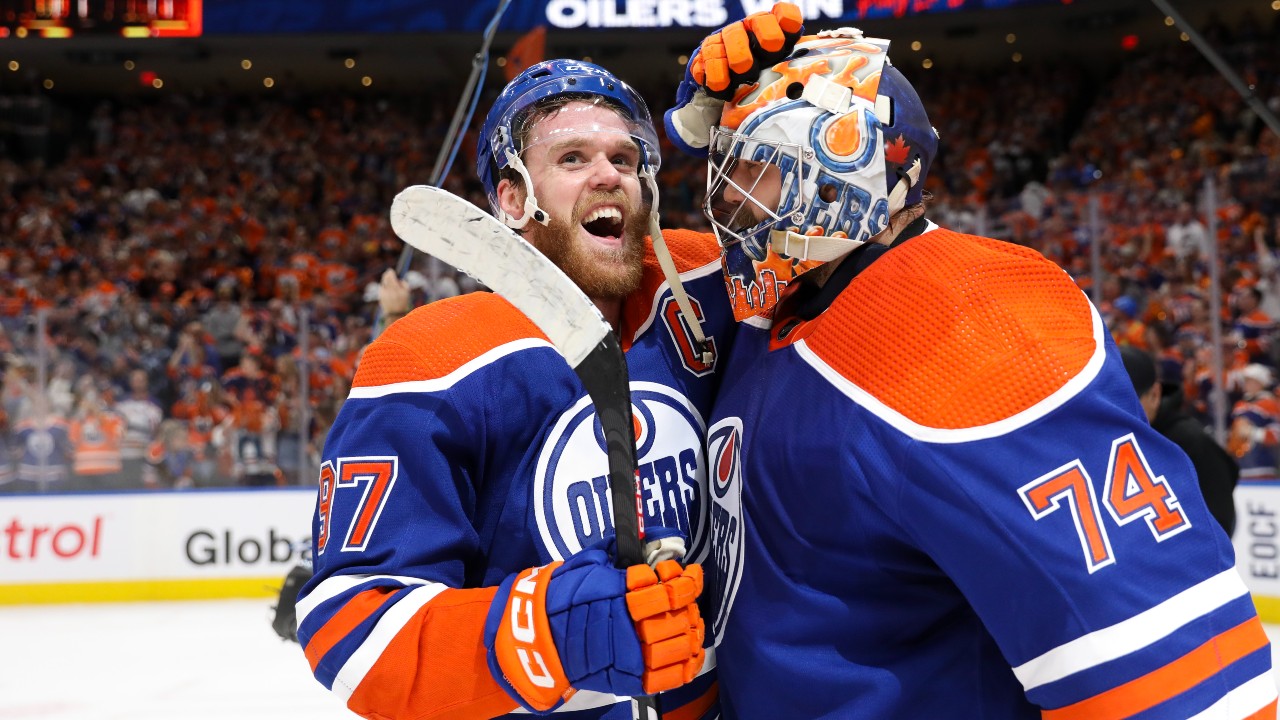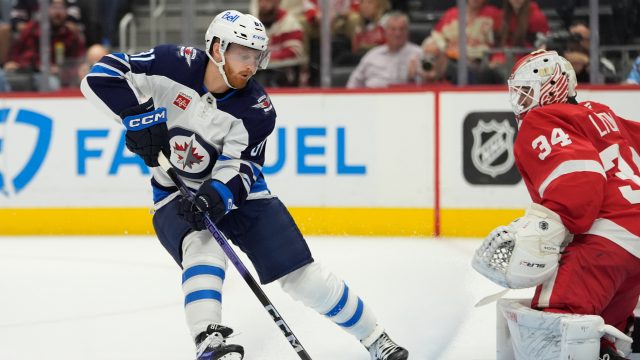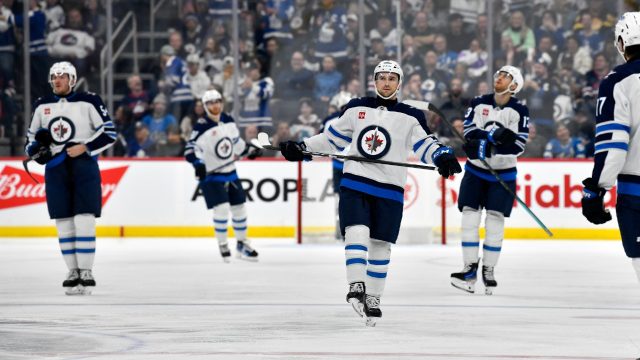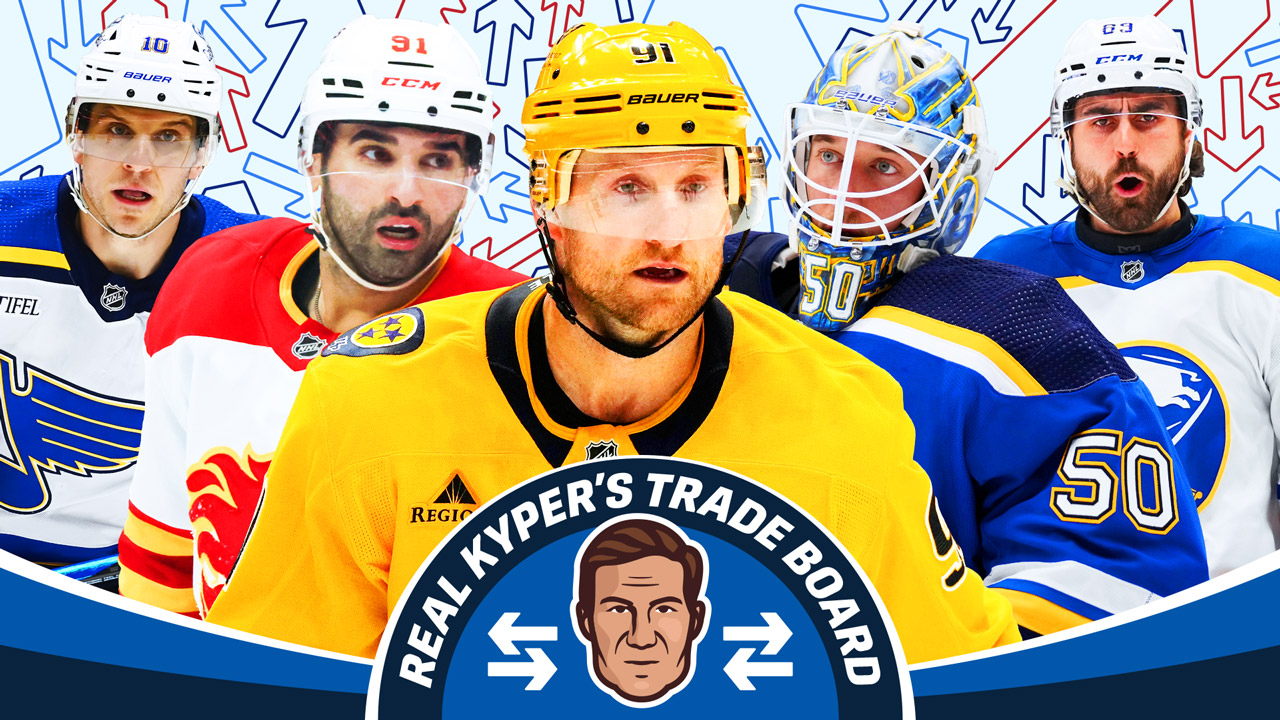
WINNIPEG — Dylan DeMelo said the quiet part out loud.
“It’s great that we’ve got a great start but we really haven’t done crap, to be honest with you,” the Winnipeg Jets defenceman told reporters before Monday’s game against the Toronto Maple Leafs, the Jets’ first loss of the season.
Before addressing the meat of that quote, let’s not downplay the part DeMelo glossed over. Winnipeg’s 9-1-0 start truly is remarkable, and while only two of those opponents were playoff teams last season, it shouldn’t discount the value in Winnipeg’s hoarding lots of points early on.
But DeMelo is right about the second part.
Winnipeg is no stranger to elite regular season play over the last few years — the Jets are tied with the Dallas Stars and Colorado Avalanche for the most regular-season wins (106) since the start of the 2022-23 season. But, in that same span, they’ve won just two playoff games.
Regular-season accolades mean bupkis to this team.
Now, that’s not to say the regular season doesn’t matter. It does. It’s an 82-game marathon — not a sprint — with ebbs and flows. As the saying goes, you can never get too high or too low.
But with the Jets steadfast on making a legitimate Cup run this spring, every bit of dissection of the season should be evaluated through the lens of, Is this good enough for a contending team?
And with that in mind, let’s evaluate the Jets’ first 10 games of the season.
Special-teams sessions are paying off
Jets coach Scott Arniel made special teams a point of emphasis right from the get-go in training camp, allocating several practices solely to the power play and penalty kill.
They had to. Winnipeg’s penalty kill was its kryptonite during last season’s playoffs, and while the Jets’ power play clicked decently in a small sample size against Colorado, it was in the bottom 10 throughout the 2023-24 regular season.
This season, the Jets boast the league’s best power play (44.8 per cent) — where they’ve generated nearly 30 per cent of their goals — and their penalty kill has gone from being below average (21st) to slightly above average (15th).
Defence is looking good
The Jets pride themselves on their identity.
“We’re kind of a defence-first-mindset type of team,” Jets forward Mason Appleton said after the Jets beat the Pittsburgh Penguins 6-3 on Oct. 20. “We would rather win a game 2-1 or 3-2.”
And aside from that beatdown from Toronto, the Jets have been pretty sound defensively during five-on-five play, ranking 11th in high-danger shot attempts against per 60 (10.39). The caveat, though, trickles back to the quality of competition. You can chalk up that Leafs loss as just a bad game, and those are going to happen, but the bigger talking point is, how will the Jets defend heavy-forechecking playoff-calibre teams?
So far, we really don’t know. But we’ll get a much better idea this month, as seven of their next 12 opponents made the playoffs last season.
There’s a top-six, bottom-six drop-off
Winnipeg’s top six has had a rough go this season.
And while recency bias may make you think it’s not a pressing issue — considering the team’s top line generated three five-on-five goals against Detroit — the last 10 games, as a whole, can’t be ignored.
|
Forwards |
xGF% |
CF% |
|
Top six |
41.1% |
47.4% |
|
Bottom six |
62.6% |
58.1% |
The Jets have the ingredients to ice a productive top six but if things don’t drastically improve, the configuration needs to be adjusted.
The Kyle Connor—Mark Scheifele—Gabriel Vilardi line showed a glimpse as to why Arniel has kept it together, despite its defensive deficiencies, Wednesday against the Detroit Red Wings. But, overall, that line has really struggled to get from point A to point B in transition, resulting in it getting hemmed into its own zone for prolonged periods of time.
The Cole Perfetti—Vladislav Namestnikov—Nikolaj Ehlers line has gotten over the hump after a dreadful first few games but there’s still lots left to be desired. Those three aren’t stuck in their own end like the aforementioned top line, but segments of sustained offensive-zone pressure have been few and far between.
The blue-line is scoring
The Jets defenceman have combined for 34 points — the most of any team in the league.
“We’ve got guys that are good at getting in front of the net. So, if we can create some chances from up top, it only helps us open up stuff down low,” Jets defenceman Neal Pionk said Wednesday night. “It’s been a point of emphasis since I got here.”
Pionk leads the charge with 12 points, which ties him with Alex Pietrangelo for second among NHL defenceman. Pionk has had a huge bounce-back year and his aggressive and calculated gambles — at both ends of the ice — have paid off.
Josh Morrissey’s 11 points tie him fourth league-wide. We’ve come to expect this type of production from him — Erik Karlsson is the only defender with more even-strength points than Morrissey since the 2022-23 season (104) — and one could even argue Morrissey has another gear to get to. We haven’t seen him take over a game yet. But that’ll come.
And we can’t forget about Colin Miller. He’s scored five points — all of which have come at even-strength — and his bomb of a shot has created several quality looks on the second power-play unit.
Michigan magicians are at it again
Kyle Connor and Connor Hellebuyck are in mid-season form.
Connor is tied for third in goals (nine) and fifth in points (17th) in the league and, honestly, that’s not even the most impressive part of his start. He’s proven to be an asset in all three zones, with his puck pursuit and second effort being top notch. And he’s been an asset on the penalty kill, too. He’s a driver, and that’s also part of the reason many have been critical of the Jets stapling him and Scheifele together, through thick and thin, despite the underwhelming defensive results. If you look around the league — at Colorado, Edmonton, etc. — teams often have their two best offensive players on separate lines at even-strength play.
Hellebuyck is doing Hellebuyck things. His numbers — .923 save percentage, 2.12 goals-against average — are aligned with what we’ve come to expect from arguably the world’s best goaltender. The biggest x-factor with Hellebuyck down the stretch will be his workload. We’ve seen his production dip over the last two playoffs — where he combined for an .878 save percentage through 10 games — and although his team’s defensive play contributed to that, one ought to wonder if fatigue played a part, too.
Do they need a top-six centre or a top-four defenseman?
This will be a hot topic until the trade deadline.
Conceivably, one could argue the team needs both. That’s no disrespect to Dylan Samberg or Vladislav Namestnikov — but if you’re sizing the Jets up against the crème de la crème of the NHL, they probably need an upgrade at their second-line centre and fourth defenceman spot.
In an ideal world, Namestnikov is best suited as a fourth-line centre on a Cup-contending team. He’s been producing — seven points in 10 games — but he doesn’t classify as the type of pillar you want down the middle come playoff time. And that’s why GM Kevin Cheveldayoff acquired Sean Monahan at last year’s deadline. If the Jets want to get the most out of that second line, they need a player who can elevate Perfetti and Ehlers. Namestnikov doesn’t fit the bill.
Samberg, on the other hand, is a high-end defender who, despite having decent chemistry with Pionk, isn’t the most fluid puck-handler. Arniel has discussed in the past how important it is for someone like Samberg, who has graduated into a top-four role in the wake of Brenden Dillon’s departure, to make tape-to-tape passes to the team’s top-six players. He’s not the most poised puck carrier — leading to lots of scenarios where he bobbles a pass and needs an extra half second to recover — and he especially struggles against hard-forechecking teams.







